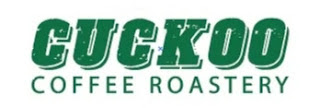Vietnam is the world's second-largest coffee producer, but also one of the most obscure. Unlike coffee exports from countries such as Brazil and Ethiopia, Vietnamese beans are typically used in cheap instant Western coffee, which earns scant international commendation. His country, he declares, needs to market a trendy style of coffee drinking—like Starbucks, he adds, but finer. “Civet dung,” he proclaims. “Civet dung makes coffee good. It's natural, and it makes real coffee.”
Mr Hung is one of a handful of Vietnamese aficionados trying to revive tastes for this epicurean and elusive beverage. At specialised coffeeshops around the world, this coffee sells for around $30 a cup. As it happens, civet cats are coffee connoisseurs. With their long noses, they sniff out and eat the best and fleshiest beans. Their digestive enzymes ferment the beans and break down the proteins. These beans, harvested from the faeces, then create a coffee that tastes rich and slightly smoky with hints of chocolate. The beverage is known in Vietnamese as ca phe chon, or civet-cat coffee, and is also commonly produced in Indonesia and the Philippines. The final cup delivers a smooth, dark palate that is stronger but, some say, less bitter than typical coffee.
Three years ago Mr Hung and three partners started Legend Revived, a high-end brand in Ho Chi Minh City that sells chon beans in Vietnam, Britain and Norway at $500 per kilogram (“The finest gift from Vietnam”). But sourcing the beans is getting trickier. Since the end of the Vietnam war, farmers have been migrating to the central highlands, the country's main coffee-producing region. “Trees have been cut down illegally all over the country, so the fox's habitat is affected severely,” says Doan Trieu Nhan, a Hanoi-based special adviser to the Vietnam Coffee and Cocoa Association. Compounding the problem, the civets themselves are now hunted and served on the dinner tables of the country's nouveau riche, he said.
As a result, there is a growing market in fake civet beans. One example widely peddled at outdoor markets is made with artificial fragrances that bear little resemblance to the drink's actual bold taste. Larger coffee chains, however, produce a more sophisticated beverage using biotechnology, isolating an enzyme similar to that in the civet's stomach that ferments the beans, and then mixing it with chocolate powder to add authenticity to its aroma. In Buon Me Thuot, the province's capital and the coffee capital of Vietnam, nearly every market-stall vendor claims to sell the weasel beans, often asking for at least $100 per kilogram. Local customers, once relentless in their search for the real thing, now often settle for the knock-offs. “People actually like buying ca phe chon even though they think it might be fake, because the price is not that expensive,” explains Nguyen Khanh Van, a university student in Ho Chi Minh City.
For the civet cats and their famous brew, the prospects were once more encouraging. In 1857 French colonialists introduced the first coffee trees to Vietnam and 30 years later built the first coffee plantations in the country. Farmers were barred from taking harvested beans, so they scavenged for the civet droppings to make their own secret roasts—a practice that gained popularity as the drink caught on in the mid-20th century.
Today most chon merchants don't look in the wild for manure, but rent out farms for their cats to roam, chew (often less than a fifth of the ripest beans) and then let nature take its course. After farmers collect and wash the droppings, they dry them in the sun for weeks until the outer skin falls off. Brewers then use one of several methods for roasting the beans. One popular approach involves dashing the beans with sugar, salt and butter, and then giving them a medium or light roast over some coffee-tree wood (a heavy roast would cause the sugary beans to lose their natural taste).
The end product, although high in quality, is a tough sell. Many dealers are unwilling to risk large sums of money when so many people are now peddling fake beans. Even genuine chon coffee, however, has its sceptics. Such an expensive and rarefied product is limited in its appeal to a tight and specialised foreign market; nearly all locals are priced out. It is “regarded simultaneously as gimmicky and incredibly sought after,” says Sarah Grant, an anthropologist studying coffee tastes in Vietnam. Other critics have challenged chon coffee on ethical grounds, alleging that many civet cats are treated inhumanely by their owners. Some farmers, for example, coerce them into eating beans by paddling them with sticks. “Given the number of advocates against weasel coffee, it's also a rather precarious product to consider marketing,” Ms Grant adds.
Such criticism doesn't deter Mr Hung and his colleagues, who claim they run an ethical business. They add that the benefits of a strong cup of chon coffee outweigh the unsavoury aspects of it passing through an animal's bowels. One obstacle, says Ms Grant, is that the world has branded Vietnam as a high-volume, rather than high-quality, producer of coffee, and reversing that perception will be tough. But Mr Hung presses forward. “Chon coffee,” he argues, “is the only way we can place Vietnam's name among coffee connoisseurs around the world.”
Jan 15th 2012, 22:32 by G.C. | BUON ME THUOT
http://www.economist.com/blogs/prospero/2012/01/coffee-vietnam

